Discover our Olympic Games history
Celebrate the upcoming Paris 2024 Olympic Games right here at the Park!
On the road to Paris…
With only 100 days to go until the opening ceremony of the Paris 2024 Olympic Games, we are celebrating our own Olympic legacy here at Sydney Olympic Park.
We have over 50 pieces of art in our vibrant outdoor art gallery across the Park, enhancing the build and natural environments at the precinct. Stop by and check out these unique pieces of art and Sydney 2000 Olympic history in the lead up to the Paris Olympic & Paralympic Games.
Games Memories
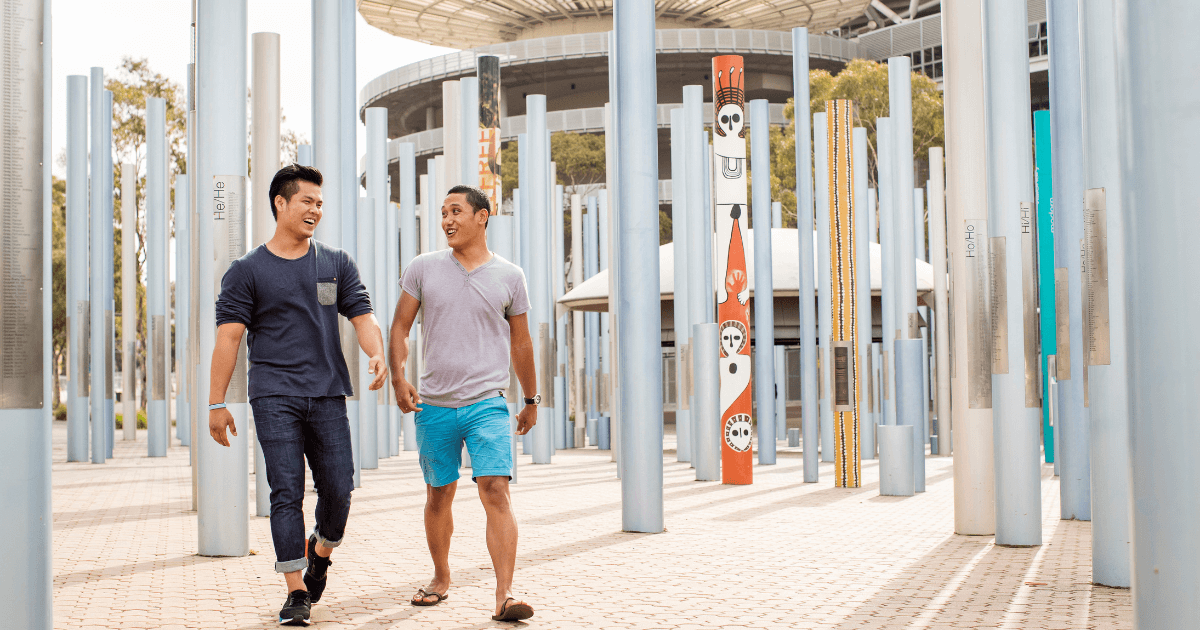
Location: Accor Stadium forecourt near the junction of Olympic Boulevard and Dawn Fraser Avenue.
Artist/Designer: Tony Caro Architecture (Architects) in collaboration with Root Projects Australia, Donny Woollagoodja (Artist for 3 Poles), Emery Vincent Design (Graphic Design), Wax Sound and Media (Multi-Media Programs).
Games Memories consists of a V-shaped forest of 480 poles, laid out at the eastern end of Olympic Plaza. Unashamedly nostalgic, it captures many of the elements that made the Games special to the athletes, volunteers, spectators in the stands and the billions watching or listening around the world.
Games Memories is primarily a permanent tribute to the volunteers who made the Sydney 2000 Olympic and Paralympic Games such a magnificent occasion. The overwhelming enthusiasm and team spirit of the volunteers inspired all those who attended the Games.
Games Memories was inspired by Stonehenge, indigenous meeting places and the existing form and detail of Sydney Olympic Park. The forest of poles represents the densely packed crowds that inhabited Sydney Olympic Park in September 2000. The random distribution of the poles and their varying heights is symbolic of the way that people randomly clustered across Olympic Plaza and Olympic Boulevard during the Games. Nearly 300 poles list the names of the 74,000 Olympic and Paralympic Volunteers who contributed their time and energy to these events.
Boral Olympic Dream Pathway
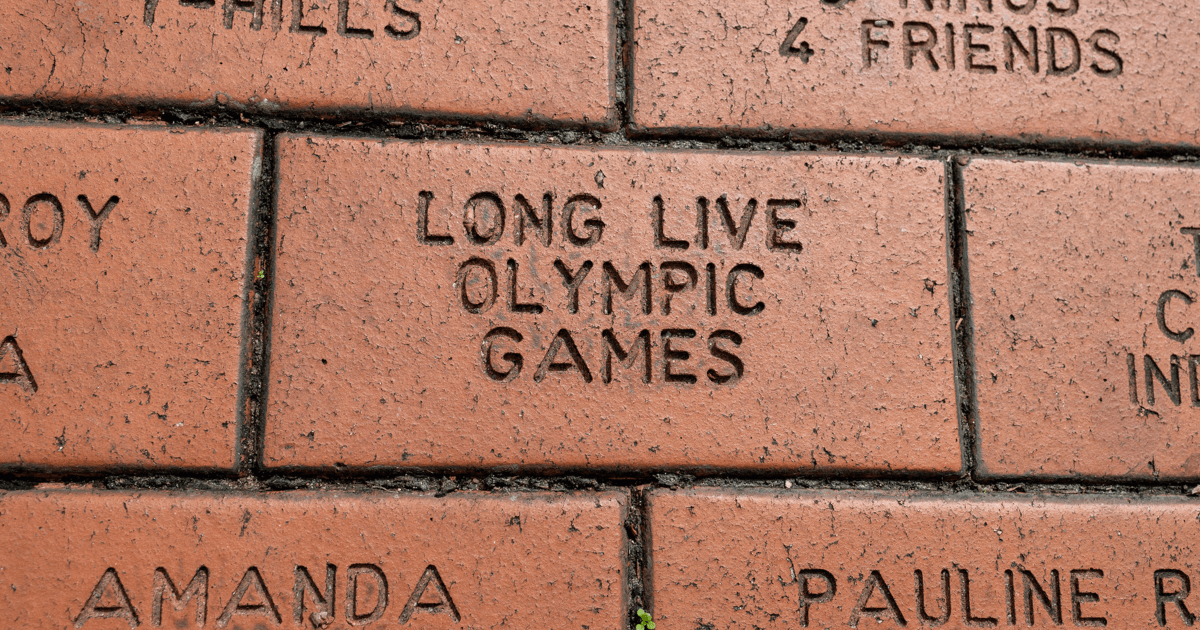
Location: Fig Grove.
The Boral Olympic Dream Pathway, at Fig Grove, is a living memory of the Sydney 2000 Olympic and Paralympic Games. The pathway consists of almost 100,000 pavers on which the names of thousands of athletes, spectators, supporters, and Boral employees, are engraved.
Construction materials giant Boral Ltd, which was one of the official suppliers of building and construction materials to the Sydney Games, sponsored the project.
The objective of the project was to give every Australian the chance to make Olympic Games history, by leaving a personal, permanent message at the site of the Games.
World champion athlete Cathy Freeman has dedicated a paver to her family, inscribed with the message “To my family, love Cathy”. Olympic legend Herb Elliot also endorsed the program, presenting Cathy Freeman with a special brick from the Australian Olympic Committee.
These bricks are laid along with thousands of others engraved with personalised messages in the heart of Sydney Olympic Park. The ornamental pavers were manufactured at Boral’s brick factory in Bringelly, New South Wales.
The Cauldron
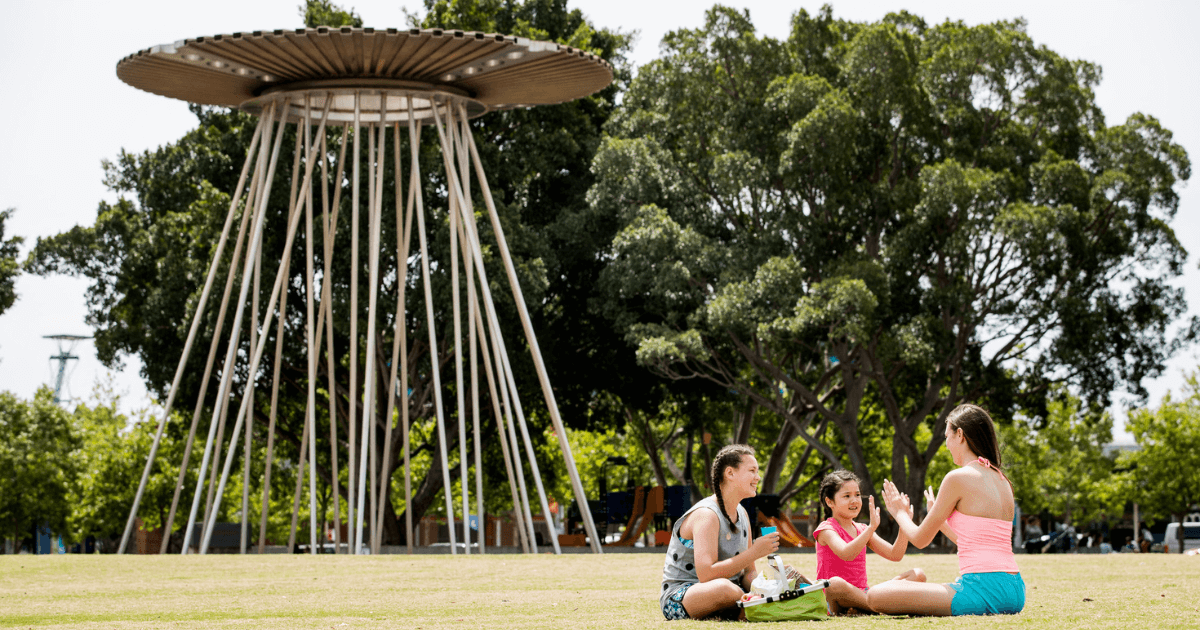
Location: Northern end of Cathy Freeman Park.
Artist: Michael Scott-Mitchell.
The lighting of the Olympic Cauldron was one of the most spectacular moments of the Sydney 2000 Olympic Games. Cathy Freeman walked to a pool of water, and as she swept the flaming Olympic torch across it, a ring of fire sprung from the submerged Olympic Cauldron.
The flaming Olympic Cauldron, with water cascading from its lower flutings, then rose to be joined with the mast, which emerged from behind the northern stand of the Stadium.
This combined structure then ascended to its maximum height, where it stood for the duration of the Games. After the Games, the Olympic Cauldron was relocated to Cathy Freeman Park, a few hundred metres from where it burned in the Olympic Stadium.
The names of the 1,972 Olympic Medallists and 2,627 Paralympic Medallists at the Sydney Games are recorded on gold, silver, and bronze nameplates at the base of the Olympic Cauldron. The Olympic Cauldron stands on 24 stainless steel columns and weighs approximately seven tonnes.
Discobolus
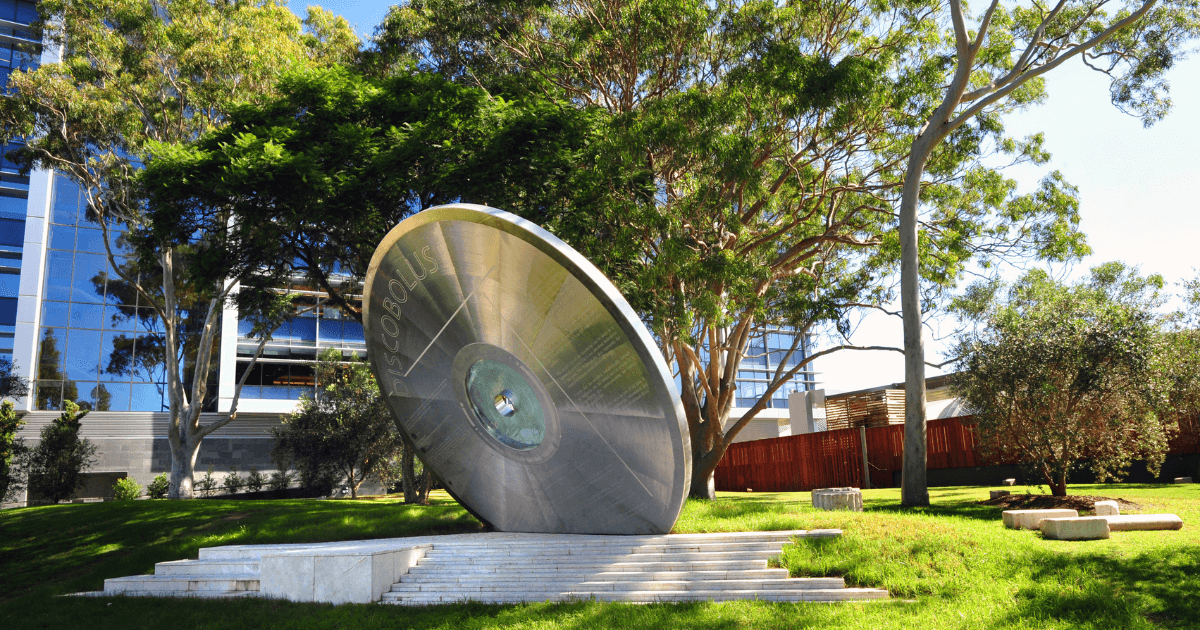
Location: Herb Elliott Avenue in Stockroute Park.
Artist: Robert Owen.
This intriguing sculpture links Sydney Olympic Park to the Olympic Games in Ancient Greece and celebrates the Greek origins of many Australian citizens. Within a grove of eucalyptus trees, the apparent remains of an ancient temple emerge, with olive and cypress trees and five column drums — the number of Olympic rings. A large disc is embedded in the ground as though it had been hurled from ancient Greece by a discus-thrower (Discobolus).
It has now become a contemporary disc — a CD-ROM. The eucalypt trees stand as custodians of the land and indigenous Australia. Olive trees are among the most ancient in existence and are the living connection between our contemporary Olympic Games and the original games held in 776 BC. Olive branches were used to make crowns for the victors and hence the olive leaf is a symbol of victory and peace. The cypress 7 tree, a symbol of immortality, was sacred to Artemis, the daughter of Zeus, and in the context of the Sydney site represents the immortal spirit of the Olympic Games.
Fragments of architectural details and a dry stonewall reference ancient archaeological sites and boundaries. The trachyte cobblestones used in the seating wall opposite were salvaged from the State Abattoirs which operated on this site from 1910 to 1988.
Discobolus was funded by the Hellenic community of Australia and commissioned as part of the Olympic Public Art Program.
Eight Women
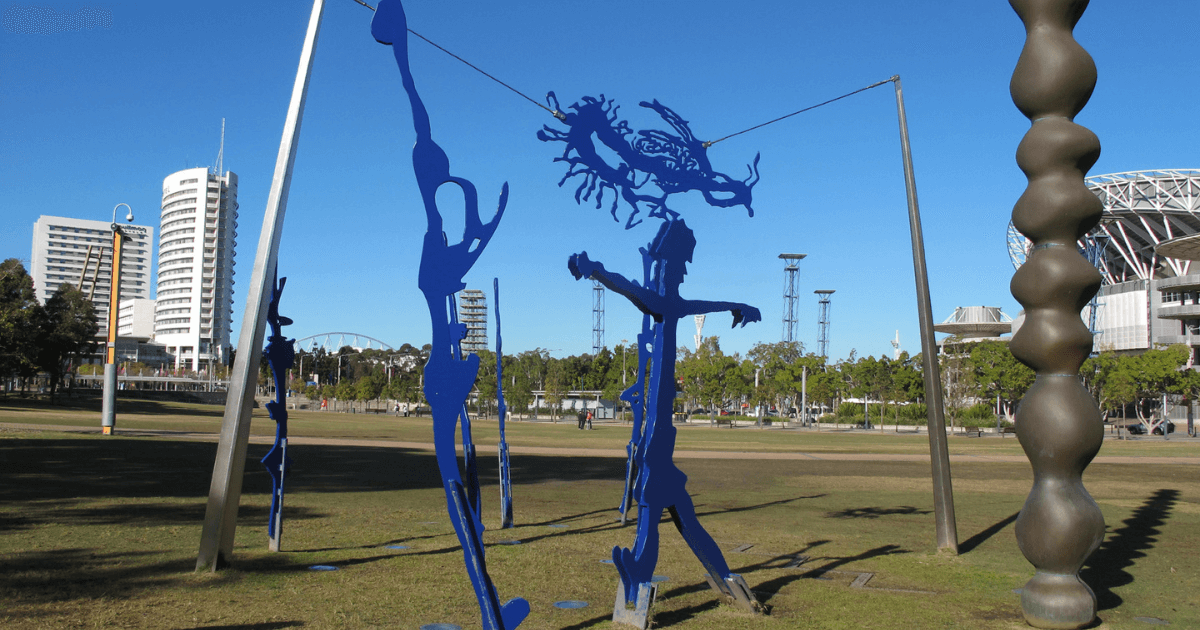
Location: Northern end of Cathy Freeman Park, near the intersection of Grand Parade and Showground Road.
Artist: Imants Tillers.
This sculptural installation was inspired by and celebrates the eight women who were involved in lighting the Sydney 2000 Olympic and Paralympic Games Cauldron. Seven of Australia’s greatest female Olympic athletes, Betty Cuthbert, Raelene Boyle, Dawn Fraser, Shirley Strickland, Shane Gould, Debbie Flintoff-King, and Cathy Freeman carried the Torch in the Opening Ceremony to light the Olympic Cauldron.
The ceremonial medley was a tribute to a century of women’s participation in the Olympic Games and a reminder of the huge contribution women have made to Australian Olympic history. The eighth woman represented is Australian Paralympian, Louise Sauvage, who ignited the Paralympic Cauldron.
Rather than a one-to-one correspondence between a particular athlete and a particular form, in this group portrait, individual attributes are interwoven into a collective whole. Eight Women is an image that commemorates athletic energy and achievement.